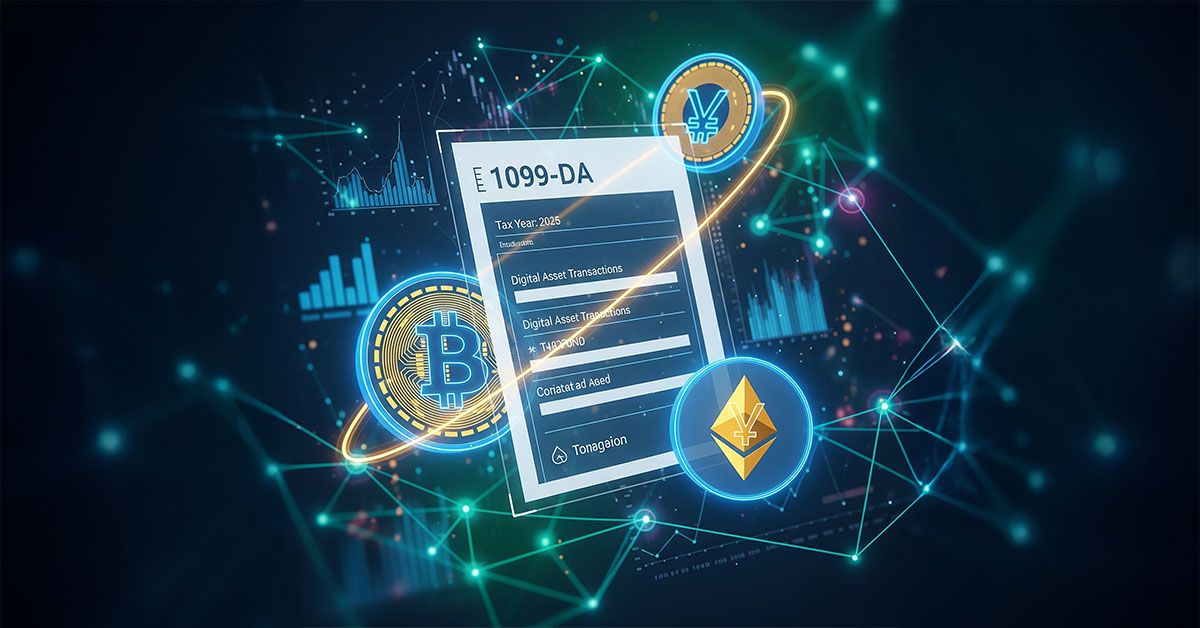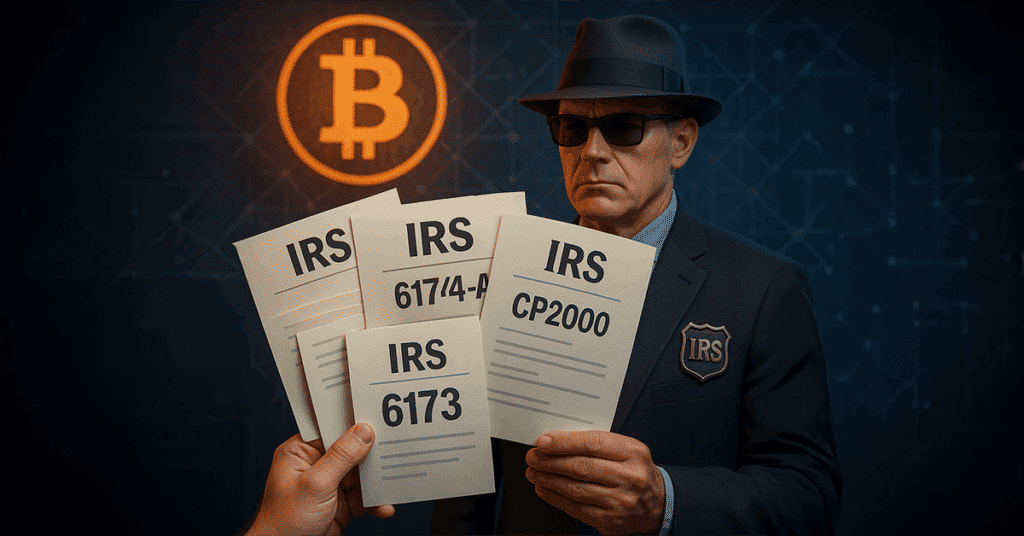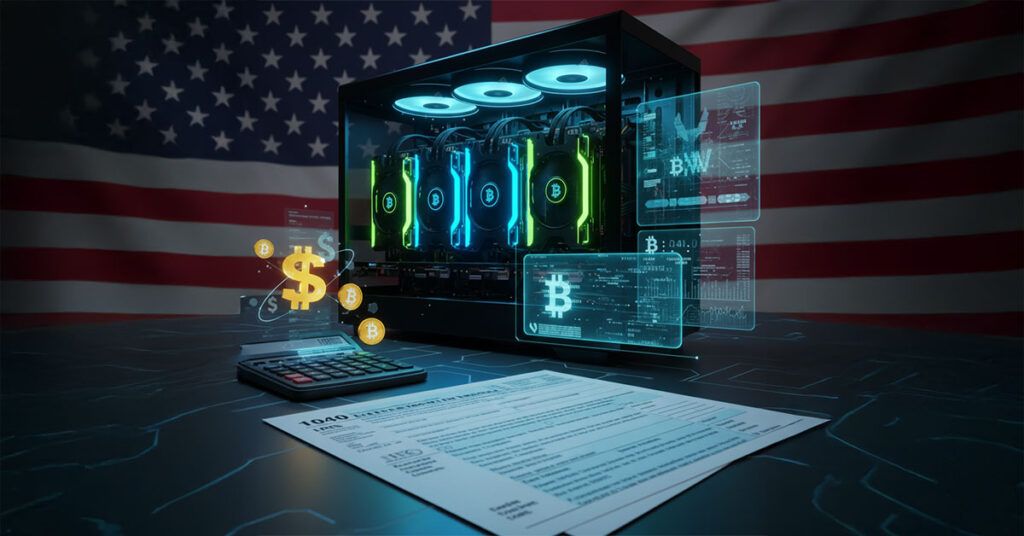Introduction
2025 is the year crypto taxation officially leveled up in the United States. For over a decade, regulators struggled to keep pace with the innovation and rapid adoption of digital assets. From Bitcoin miners running basement rigs to NFT collectors trading digital art on Ethereum, the IRS often found itself playing catch-up. That changed this year.
With the rollout of Form 1099-DA, the IRS has expanded its reach over crypto like never before. For the first time, brokers, exchanges, and some wallet providers must report your crypto transactions directly to the IRS, while also sending you a copy.
On the surface, this seems like a step toward clarity and compliance. But for many investors, it’s raising questions, sparking confusion, and creating new risks. The IRS now has data pipelines flowing directly from exchanges, yet crypto users often have assets scattered across multiple platforms, self-custody wallets, and DeFi protocols. The mismatch between what the IRS sees and what you report could trigger audits, penalties, or inflated tax bills.
The key to survival in this new era isn’t avoiding the IRS, it’s staying one step ahead of them.
Key Takeaways
- Form 1099-DA gives the IRS direct visibility into crypto transactions.
- Missing cost basis or unreported DeFi/NFT activity can trigger audits.
- Keep records consolidated and accurate across platforms.
- Use CRPTM to simplify reporting and stay compliant in 2025.
What Is Form 1099-DA?

Form 1099-DA is the IRS’s new digital asset reporting form, effective beginning with the 2025 tax year. It’s modeled on Form 1099-B (used for stocks and bonds) but specifically designed to capture the complexities of crypto.
Who issues it?
– Centralized exchanges
– Custodial wallet providers
– Brokers dealing in digital assets
Who receives it?
– You (the taxpayer)
– The IRS (for matching against your return)
What does it include?
– Date of acquisition and sale/disposal
– Gross proceeds from transactions
– Cost basis (where known)
– Wallet identifiers or account details
Why 1099-DA Is Different (and Riskier)
For stock investors, a single 1099-B often covers all trades within one brokerage account. It’s straightforward. Crypto investors, however, rarely live in a single account.
Imagine this scenario:
– You buy ETH on Coinbase.
– You transfer it to a MetaMask wallet.
– You stake it in a DeFi protocol for rewards.
– You sell some ETH later on Kraken.
– You purchase NFTs with the rest.
Each platform may report part of this story, but no one sees the full journey. To the IRS, it may look like you earned income or had gains without a proper cost basis. That can lead to higher taxable amounts than you truly owe.
Key challenges include:
– Mismatched Records
– DeFi and NFT Blind Spots
– Cost Basis Confusion
How the IRS Uses 1099-DA
The IRS has made it clear: crypto is a top enforcement priority. With 1099-DA, their oversight has grown significantly.
Here’s how the IRS leverages this new form:
– Automated Matching: Cross-checks 1099-DA data with your Form 8949 and Schedule D.
– Audit Triggers: Discrepancies may result in IRS notices such as CP2000 or even audits.
– Lookback Power: The IRS can review filings for up to six years if they believe you have underreported income.
The age of “crypto tax secrecy” is over. The IRS doesn’t need to chase; they already have the data.
Common Pitfalls in the 1099-DA Era
– Over-reliance on broker forms: Assuming your 1099-DA tells the whole story.
– Ignoring DeFi and NFTs: Believing they are “off the radar” when they’re taxable.
– Forgetting mining or staking rewards: Taxable as income at receipt and later capital gains.
– Inconsistent cost basis tracking: Using spreadsheets or neglecting wallet transfers, leading to mismatches.
How to Stay Ahead in 2025
1. Consolidate All Your Activity
Gather every wallet, exchange, and protocol into one complete record.
2. Track Cost Basis with Accuracy
The IRS allows FIFO and Specific ID. Accurate tracking reduces your tax burden.
3. Don’t Ignore DeFi and NFTs
The IRS has warned decentralized activity is taxable.
4. Be Prepared for IRS Notices
Reconciling your own records with broker data before filing can save you stress.
Case Study: The Cost Basis Trap
Let’s say you bought 1 BTC in 2019 for $8,000 and transferred it between three wallets before selling it on Coinbase in 2025 for $90,000.
Coinbase may only see the disposal and assume a zero-cost basis, reporting the entire $90,000 as a gain. The IRS matches that report against your return. If you fail to track the original $8,000 acquisition, you’ll appear to owe taxes on $90,000 instead of the true $82,000 gain.
This is why self-tracking matters more than ever.
Global Context: Beyond the U.S.
While 1099-DA is U.S.-specific, it reflects a broader trend. The OECD’s Crypto-Asset Reporting Framework (CARF) is set to roll out globally by 2026. This means exchanges worldwide will share customer transaction data across borders, much like existing bank account reporting systems.
For crypto users, the writing is on the wall: transparency is no longer optional.
How CRPTM Protects You
– Complete Consolidation: Sync centralized exchanges, DeFi platforms, NFTs, and wallets.
– Cost Basis Continuity: Carry acquisition history across platforms.
– IRS-Ready Reports: Generate Form 8949, Schedule D, and income statements aligned with 1099-DA.
– Audit Defense: Provide reconciled records for IRS inquiries.
– Future-Ready Compliance: Stay ahead of global changes like CARF.
Final Thoughts

The launch of Form 1099-DA marks the start of a new chapter in crypto taxation. Investors no longer operate in a grey zone. The IRS has clear visibility into your activity, and mistakes, intentional or not, can have serious consequences.
But this isn’t the end of crypto’s freedom; it’s the beginning of responsible participation in a maturing financial system. By consolidating your records, tracking cost basis, and reporting everything, you can file confidently and reduce the risk of unwanted IRS attention.
With CRPTM by your side, you’re not just surviving the 1099-DA era, you’re thriving in it.
Take control today. Run your CRPTM scan and get ahead of tax season before the IRS gets ahead of you.
Disclaimer: The information presented on this website is intended for general informational purposes only and should not be interpreted as professional advice from CRPTM. CRPTM does not offer financial advice. We strongly recommend seeking independent legal, financial, tax, or other professional advice to determine how the information provided on this website applies to your specific circumstances. CRPTM assumes no liability for any loss incurred, whether due to negligence or otherwise, resulting from the use of or reliance on the information contained herein.


